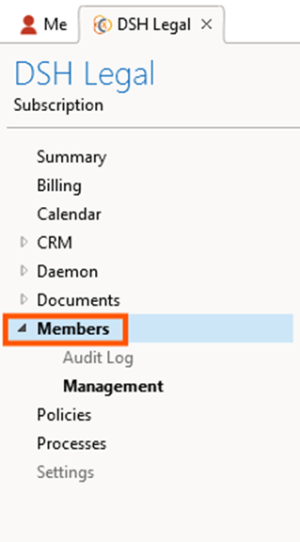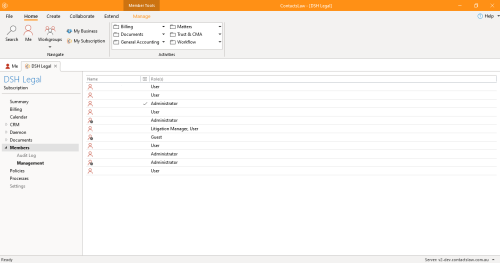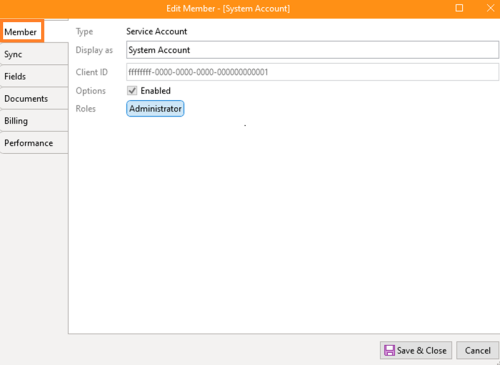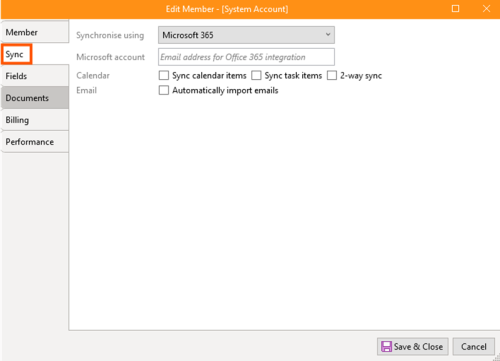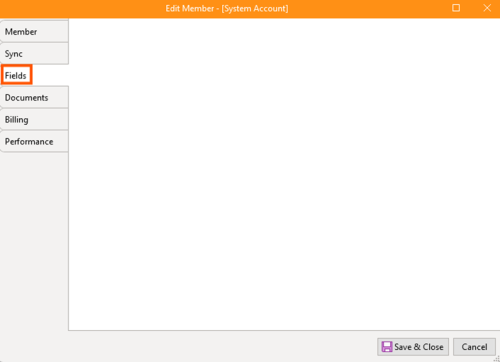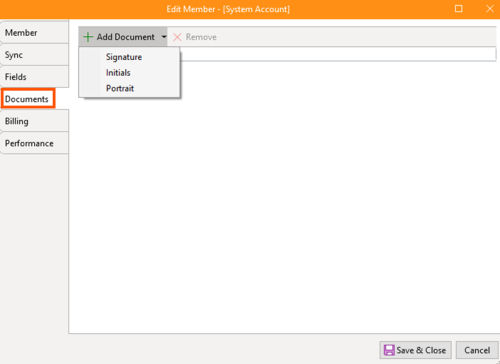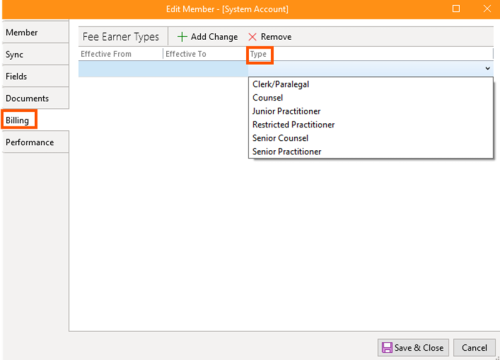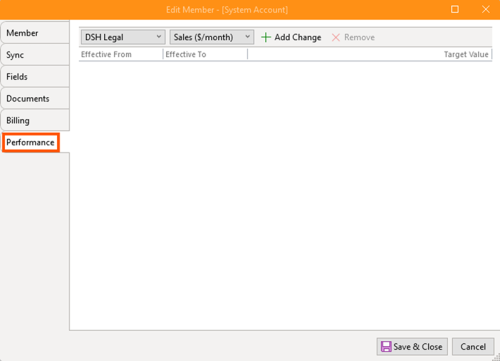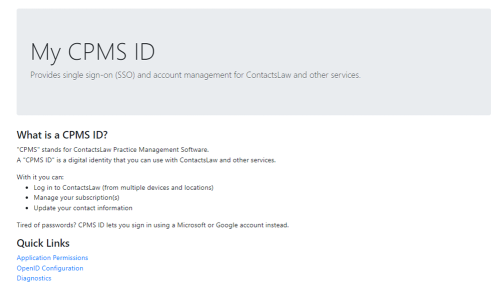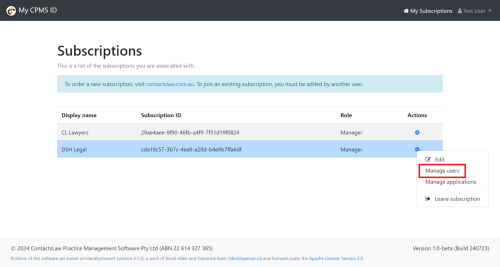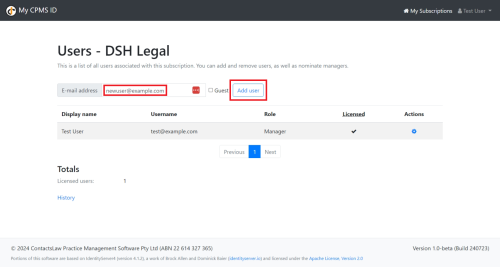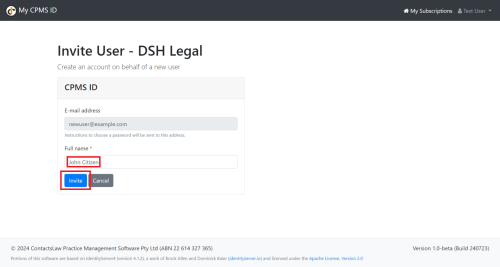How-To:Member: Difference between revisions
(Created page with "Members are what we call users in the ContactsLaw. A member can either be an interactive user who logs into the system, or it can be what we call a service account which is going to be some third party application or integration that talks to the system not in respect of a particular person. The below guide will explain the ways on how we can add new members into the system: 1. Getting Started Navigate to the ribbon group and click on My Subscription. Proceed to the p...") |
(new how-to) |
||
| Line 3: | Line 3: | ||
The below guide will explain the ways on how we can add new members into the system: | The below guide will explain the ways on how we can add new members into the system: | ||
1. Getting Started | == 1. Getting Started == | ||
Navigate to the ribbon group and click on My Subscription. | Navigate to the ribbon group and click on My Subscription. | ||
[[File:Step 1 - Member.png|none|thumb|500x500px]] | |||
Proceed to the pane and click Members. | |||
[[File:Step 2 - Member.png|none|thumb]] | |||
In the grid, you will see a list of all of the active members and the ones who have current access to the software. Then choose a member. | |||
[[File:Step 3 - Member.png|none|thumb|500x500px]] | |||
== 2. Member Properties == | |||
Members Properties has six (6) sections, and those are: Member, Sync, Fields, Documents, Billing, Performance. | |||
* '''Type''': There are two (2) types of member: a Service Account and an Interactive User. Service account is an account for the system directly, while Interactive users always have an associated contact. | |||
* '''Display''': Refers to the name of the member. | |||
* '''Client ID''': Identification I.D within the system | |||
* '''Roles''': This option also refers to the access of the member in the system. Examples of roles in the system are: Administrator, User, and Guest. | |||
[[File:Step 4 - Member.png|none|thumb|500x500px]] | |||
'''Sync''' - refers to the tasking calendar synchronisation depending on how an individual subscription is set up. | |||
* '''Synchronise''' using: Synchronisation of members is supported by Microsoft 365. | |||
* '''Microsoft account:''' Microsoft 365 email address. | |||
* '''Calendar''': Refers to the options that can choose to do terms of synchronisation. It may be sychronsation of calendar items, task items, or 2-way sync. | |||
* '''Email''': Automatically import emails is an option that has a scheduled job that goes through periodically and brings emails that are tagged with matter. | |||
[[File:Step 5 - Member (Sync).png|none|thumb|500x500px]] | |||
Proceed to the | '''Fields''' - refers to the custom fields for matters and contacts, which you can set up custom profile fields for members. | ||
[[File:Step 6 - Member (Fields).png|none|thumb|500x500px]] | |||
'''Documents''' - refers to the several types of documents with members, specifically things like images containing signatures, initials, and portraits. | |||
[[File:Step 7 - Member (Document).png|none|thumb|500x500px]] | |||
'''Billing'''- this refers to a concept in time recording that determines what rates get used for recording time, and that means that the member fits into what we call a Fiona type which is configured at the subscription level. | |||
[[File:Step 8 - Member (Billing).png|none|thumb|500x500px]] | |||
'''Performance''' - This option is about setting performance targets, which is used in performance management and statistics. | |||
[[File:Step 9 - Member (Performance).png|none|thumb|500x500px]] | |||
== 3. Manage Member == | |||
Member management has been divided into three (3) categories. | |||
* New: Create members manually, you can do both interactive users and service accounts through here. This option is only limited to members whose role is administrator. [[File:Step 10 - Manage Member (New).png|none|thumb|500x500px]] | |||
* View: This option can help you know who have been marked inactive members in the system. [[File:Step 11 - Manage Member (View).png|none|thumb|500x500px]] | |||
* Actions: This option refers to editing profile fields of the members which is only limited to members whose role is administrator.[[File:Step 12 - Manage Member (Actions).png|none|thumb|500x500px]] | |||
== 4. Adding New Member == | |||
The below guide will explain the key steps in adding new members into the contacts law subscription: | |||
* Option 1: Go to My CPMS ID[[File:Step 13 - CPMS ID.png|none|thumb|500x500px]] | |||
* Proceed to My Subscriptions.[[File:Step 14 - CPMS ID Click My Subsricriptions.png|none|thumb|500x500px]] | |||
* Go to DSH Legal, right click and choose Manage Users.[[File:Step 15 - CPMS ID - List of Subscriptions.png|none|thumb|500x500px]] | |||
* Then you add a New User by adding an email address. [[File:Step 16 - CPMS ID - Manage Users.png|none|thumb|500x500px]] | |||
** Option 2: Go back to the ContactsLaw App, navigate to the ribbon group and choose Interactive User or Service Account.[[File:Step 10 - Manage Member (New).png|none|thumb|500x500px]] | |||
== 5. Final Steps == | |||
Before you save the new member that you created, a CPMS ID is required. | |||
* If the process is through option 1, an invite will be sent to your email address. | |||
* For the option 2, the process of having the CPMS ID number, see separate article about [[CPMS ID]]. | |||
[[File:Step 18 - CPMS ID - Invite User.png|none|thumb|500x500px]] | |||
Revision as of 07:50, 16 September 2024
Members are what we call users in the ContactsLaw. A member can either be an interactive user who logs into the system, or it can be what we call a service account which is going to be some third party application or integration that talks to the system not in respect of a particular person.
The below guide will explain the ways on how we can add new members into the system:
1. Getting Started
Navigate to the ribbon group and click on My Subscription.
Proceed to the pane and click Members.
In the grid, you will see a list of all of the active members and the ones who have current access to the software. Then choose a member.
2. Member Properties
Members Properties has six (6) sections, and those are: Member, Sync, Fields, Documents, Billing, Performance.
- Type: There are two (2) types of member: a Service Account and an Interactive User. Service account is an account for the system directly, while Interactive users always have an associated contact.
- Display: Refers to the name of the member.
- Client ID: Identification I.D within the system
- Roles: This option also refers to the access of the member in the system. Examples of roles in the system are: Administrator, User, and Guest.
Sync - refers to the tasking calendar synchronisation depending on how an individual subscription is set up.
- Synchronise using: Synchronisation of members is supported by Microsoft 365.
- Microsoft account: Microsoft 365 email address.
- Calendar: Refers to the options that can choose to do terms of synchronisation. It may be sychronsation of calendar items, task items, or 2-way sync.
- Email: Automatically import emails is an option that has a scheduled job that goes through periodically and brings emails that are tagged with matter.
Fields - refers to the custom fields for matters and contacts, which you can set up custom profile fields for members.
Documents - refers to the several types of documents with members, specifically things like images containing signatures, initials, and portraits.
Billing- this refers to a concept in time recording that determines what rates get used for recording time, and that means that the member fits into what we call a Fiona type which is configured at the subscription level.
Performance - This option is about setting performance targets, which is used in performance management and statistics.
3. Manage Member
Member management has been divided into three (3) categories.
- New: Create members manually, you can do both interactive users and service accounts through here. This option is only limited to members whose role is administrator.
- View: This option can help you know who have been marked inactive members in the system.
- Actions: This option refers to editing profile fields of the members which is only limited to members whose role is administrator.
4. Adding New Member
The below guide will explain the key steps in adding new members into the contacts law subscription:
- Option 1: Go to My CPMS ID
- Proceed to My Subscriptions.
- Go to DSH Legal, right click and choose Manage Users.
- Then you add a New User by adding an email address.
- Option 2: Go back to the ContactsLaw App, navigate to the ribbon group and choose Interactive User or Service Account.
5. Final Steps
Before you save the new member that you created, a CPMS ID is required.
- If the process is through option 1, an invite will be sent to your email address.
- For the option 2, the process of having the CPMS ID number, see separate article about CPMS ID.



